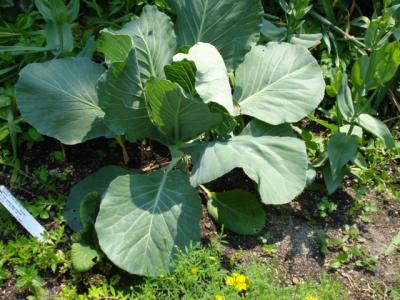Collards can be grow in a variety of soil types but they perform well in fertile, well-drained soils. They do well in soils with high organic matter content. Collards like other leafy vegetables need adequate nitrogen for tender growth and green leaf color. They need to be sidedressed twice before harvesting.
Collard is a cool season vegetable that should be planted in early spring or late summer for fall garden. Mature plant can tolerate light freezes and frosts. It is commonly grown in southern states but it has been gaining alot of popularity in the midwest.
Collards can be grown from seeds or transplants. It needs 6 to 8 weeks to produce transplants. Direct seeded collard seeds need to be planted not deeper than 1-inch in moist soils .
Collards can be harvested by either cutting the whole plant when immature or mature, and by harvesting tender leaves from full grown plants. Harvested leaves should be washed, cooled, and stored in a refrigerator .
Spacing depends on how the crop will be harvested. Plants that will be harvested when half grown should be planted 10 to 15 inches apart, and when full grown 15 to 18 inches apart respectively. Crop harvested when plants are still young need to be planted 2 to 4 inches apart. Rows can be 36 to 42 inches apart.
Environmental Damage
Additional pests and problems that may affect this plant:
Insect pests:
- Imported cabbage worm
- Cabbage looper
- Diamondback moth
- Harlequin bugs
- Aphids
Disease:
- Black rot
- Downy mildew
- Black leg
Continuous exposure of plants to low temperatures over along period of time may cause plants to develop flower heads (bolting). This is very common in some varieties than others. Some diseases such as black rot are seedborne so go for treated seeds.
